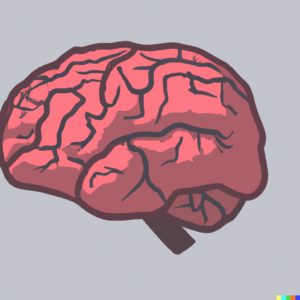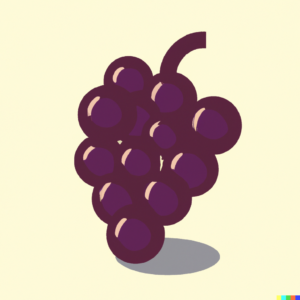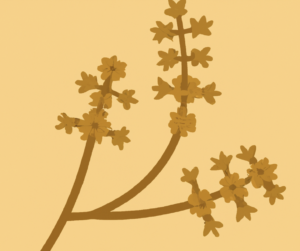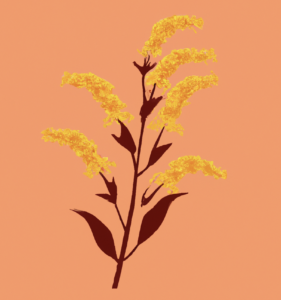⏰ Last Update: 14.08.2024
A stroke is a serious medical condition where the supply of blood to the brain is compromised or completely cut off, leading to the death of brain cells due to oxygen deprivation. This article provides an in-depth understanding of the condition, their prevention strategies, and how lifestyle changes and a natural supplement like GinkgoVin can play a role in promoting vascular health.

Types of Strokes
A stroke, often referred to as a cerebrovascular accident (CVA), is a medical emergency characterized by an abrupt interruption of blood supply to the brain. This interruption deprives the brain of essential nutrients and oxygen, causing brain cells to begin dying within minutes. The subsequent cell death can result in permanent neurological damage, long-term disability, and even death.
Ischemic Stroke
Accounting for about 87% of all stroke cases, ischemic stroke transpires when there’s a blockage in the arteries that transport blood to the brain. This blockage is typically caused by blood clots, which can form either in the brain’s blood vessels (thrombotic stroke) or elsewhere in the body and travel to the brain (embolic stroke). Ischemic strokes can also be a result of systemic hypoperfusion—a condition where low blood flow affects the entire brain—often caused by severe heart failure or shock.
Hemorrhagic Stroke
Hemorrhagic stroke, though less common, is often more deadly. It occurs when a blood vessel in the brain ruptures or leaks, leading to blood spillage in or around the brain. This situation can create pressure on the cerebral tissue, damaging cells and causing swelling and inflammation. Hemorrhagic strokes can be subtyped as intracerebral (bleeding within the brain) or subarachnoid (bleeding in the space between the brain and the surrounding membrane). The most common causes of hemorrhagic stroke are high blood pressure and aneurysms (weakened and bulging vessel walls).
Transient Ischemic Attacks (TIAs)
Often dubbed as “mini-strokes,” TIAs are temporary episodes of stroke-like symptoms that usually last less than 24 hours, most often only a few minutes. Although TIAs don’t typically cause permanent brain damage, they serve as a serious warning sign of a potential full-blown stroke and therefore demand immediate medical attention. TIAs occur when there’s a short-lived disruption of blood flow to a part of the brain. Despite their transitory nature, TIAs share the same underlying causes as ischemic strokes—clots or debris obstructing the blood flow in cerebral arteries.
Risk Factors
The root causes center around the disruption of blood flow to the brain, whether through blockage or leakage. However, various underlying conditions and lifestyle factors can significantly contribute to the occurrence of a stroke. Let’s explore these in detail:
Atherosclerosis
This is the most common cause of stroke. Atherosclerosis involves the build-up of fats, cholesterol, and other substances in artery walls, forming plaques that can restrict or block blood flow. When this occurs in the arteries leading to the brain, it can result in an ischemic stroke.
Heart Conditions
Certain heart disorders, such as coronary artery disease, heart valve defects, irregular heartbeat (atrial fibrillation), and enlargement of the heart’s chambers, can lead to clot formation. These clots can then dislodge, travel through the bloodstream to the brain, and cause an embolic stroke.
Blood Disorders
Conditions that increase the clotting tendency of the blood, such as sickle cell disease and polycythemia, can predispose an individual to ischemic stroke. Conversely, disorders that reduce blood’s ability to clot, like hemophilia and Von Willebrand disease, can increase the risk of hemorrhagic stroke.
Uncontrolled Hypertension
High blood pressure can weaken blood vessels over time, making them more likely to burst and cause a hemorrhagic stroke. Hypertension can also accelerate the development of atherosclerosis, increasing the risk of ischemic stroke.
There are natural supplements that have a positive effect on the cardio-vascular system and therefore affect positively the blood pressure. Learn more about GinkgoVin: https://botaniclife.ng/product/ginkovin/
Aneurysms and Arteriovenous Malformations (AVMs)
These are examples of vascular anomalies that can cause hemorrhagic strokes. An aneurysm is a weak spot in a blood vessel that balloons out and can rupture. AVMs are tangles of poorly formed blood vessels that can also rupture within the brain.
Lifestyle Factors
Factors such as smoking, excessive alcohol consumption, obesity, physical inactivity, and illicit drug use (especially cocaine or methamphetamines) can increase the risk. These factors can contribute to high blood pressure, hardening of the arteries, and inflammation, which are all underlying conditions that predispose individuals to strokes.
Medical Conditions
People with certain conditions, such as diabetes, high cholesterol, obstructive sleep apnea, and autoimmune conditions like lupus, are at a higher risk of stroke due to the disease’s impact on blood vessels and clotting.
Age and Genetics
The risk increases with age, particularly after age 55. A family history of stroke can also increase risk, suggesting a possible genetic component.
Preventive measures can make a major impact after a certain age. GinkgoVin is a natural food supplement that has a positive effect on the cardio-vascular health: https://botaniclife.ng/product/ginkovin/
Recognizing these causes is crucial for prevention efforts and can help individuals make informed decisions about lifestyle changes and treatment options.
Symtpoms
A stroke is a medical emergency, and timely recognition of its symptoms can drastically impact the patient’s prognosis. The primary symptoms of stroke often appear suddenly and can be remembered with the acronym FAST:
Face Drooping
One of the most common signs of a stroke is facial asymmetry. This can be identified if one side of the person’s face droops or feels numb. When asked to smile, the individual’s smile may appear uneven or lopsided.
Arm Weakness
Weakness or numbness in one arm is another significant symptom of a stroke. The person might experience difficulty lifting one or both arms because of weakness or a sudden loss of strength. They might also display an inability to hold an arm up in a steady position when asked to extend it.
Speech Difficulty
Stroke can cause sudden slurring of speech or difficulty speaking or understanding speech. The person may struggle with simple sentences or use incorrect words. This can manifest as trouble finding the right words, speaking incoherently, or being unable to speak at all.
Time to Call Emergency Services
If someone shows any of these symptoms, even if the symptoms disappear, it’s critical to call for medical help immediately. ‘Time is brain’ in a stroke situation, and every minute counts towards potentially saving someone’s life and minimizing long-term disability.
In addition to FAST, other signs and symptoms of a stroke can include:
Sudden Numbness or Paralysis
A sudden, unexplained numbness or an inability to move parts of the body, especially on one side, can indicate a stroke. This numbness can occur in the face, arm, or leg, often on one side of the body.
Confusion
Individuals having a stroke may suddenly become confused or experience difficulty understanding. This can be identified by a sudden inability to comprehend other people’s speech or an abrupt lack of awareness of their surroundings.
Trouble Seeing
Strokes can cause sudden visual disturbances, including blurred vision, double vision, or even temporary blindness in one or both eyes. The person may also describe a sensation of a ‘black curtain’ coming down over their vision.
Walking Difficulties
Sudden dizziness, loss of balance, or trouble walking are additional indicators. The person may suddenly stumble, have difficulty with coordination, or experience unexplained dizziness or a severe, sudden headache.
Severe Headache
A sudden, severe headache with no known cause is a distinct sign of a stroke, especially when accompanied by other stroke symptoms. This can be particularly indicative of a hemorrhagic stroke.
Recognizing and acting on these symptoms without delay can dramatically improve the chances of a positive outcome and can reduce the severity of potential long-term complications.
Diagnosing
When a patient presents with signs and symptoms suggestive of a stroke, swift and accurate diagnosis is imperative. This is because the type of stroke (ischemic or hemorrhagic) will determine the course of treatment, and time is of the essence in mitigating brain damage.
Diagnosis of a stroke typically involves several key steps:
Medical History and Physical Examination
The process of diagnosing a stroke usually begins with the healthcare provider taking a detailed medical history, including symptoms, their onset, and any risk factors such as hypertension, diabetes, high cholesterol, and smoking. The physical examination will include a neurological examination to evaluate muscle strength, sensation, reflexes, vision, speech, coordination, and balance.
Blood Tests
These are typically performed to rule out other conditions that may mimic stroke symptoms, to assess the patient’s overall health, and to determine any risk factors for stroke. For example, tests for clotting times can help evaluate the patient’s risk for an ischemic stroke.
Imaging Tests
Brain imaging is essential for differentiating between ischemic and hemorrhagic strokes, which require different treatment strategies.
Computed Tomography (CT) Scan
This is often the first imaging test performed as it can quickly visualize the brain, identify bleeding, and detect some types of stroke. A CT scan can rule out a hemorrhagic stroke, thereby clearing the way for clot-busting drugs to be given if an ischemic stroke is suspected.
Magnetic Resonance Imaging (MRI)
An MRI uses powerful magnets and radio waves to create detailed images of the brain. It can detect changes in brain tissue and blood vessels, helping to identify and characterize the type and location of the stroke.
Vascular Imaging
This allows doctors to view the arteries in the neck and head to check for blockages or clots. Techniques used can include a CT angiogram (CTA), an MR angiogram (MRA), or a carotid ultrasound.
Electrocardiogram (ECG/EKG)
This test records the heart’s electrical activity and can identify heart conditions that might have led to a stroke.
Echocardiogram
This test uses sound waves to create detailed images of the heart’s structure and function. It may be used when it is suspected that the stroke originated from a blood clot in the heart.
The above diagnostic tools, often used in combination, help in confirming the occurrence of a stroke, pinpointing its location, determining its type, and ruling out other possible diagnoses. These findings then guide the healthcare team in creating an effective treatment plan to mitigate further damage and begin the process of recovery.
Treatment
Treatment for stroke is determined by its type, ischemic or hemorrhagic, and the root cause. Immediate medical aid is vital to minimize brain damage and potential complications. Here’s a condensed overview of the treatment options:
For Ischemic Stroke
Thrombolytic Drugs
Often termed “clot-busting” drugs, thrombolytics like tissue plasminogen activator (tPA) dissolve the clot blocking blood flow to the brain. Administered promptly after stroke onset, these drugs are most effective.
Antiplatelet Drugs and Anticoagulants
These inhibit new clot formation and prevent existing clots from growing. Aspirin is often given immediately, with other drugs prescribed for long-term management.
Endovascular Procedures
Procedures like mechanical thrombectomy directly remove or break up clots.
For Hemorrhagic Stroke
Blood Pressure Control: Critical to prevent further bleeding.
Surgery and Procedures
Depending on bleeding location and severity, surgical interventions may repair blood vessel abnormalities and minimize the risk of further bleeding.
Post-stroke, rehabilitation is key to recovery, which may include physical, occupational, and speech-language therapy. Long-term stroke prevention focuses on medications controlling blood pressure, cholesterol, and blood thinning, coupled with lifestyle modifications.
Prevention of Stroke
Preventing a stroke, particularly if you have already experienced one or have been identified as high risk, involves an integrated strategy that combines medical treatments with lifestyle modifications. Here’s a detailed look at various preventive measures:
Controlling High Blood Pressure
Lowering blood pressure, primarily through lifestyle changes and potentially medication, can reduce stroke risk significantly.
Managing Diabetes
Proper control of diabetes, through a healthy lifestyle and medication, can help prevent stroke.
Treating Atrial Fibrillation
Anticoagulant medications can reduce stroke risk associated with this heart condition.
Quitting Smoking and Limiting Alcohol
Both lifestyle changes can significantly decrease stroke risk by improving overall vascular health.
Maintaining Healthy Weight and Regular Physical Activity
Regular exercise and a balanced diet can help maintain a healthy weight, reducing stroke risk.
Healthy Diet
A diet rich in whole foods can lower blood pressure and cholesterol levels.
Managing Stress
Healthy stress management techniques can mitigate stroke risk factors like high blood pressure.
Regular Checkups
Regular medical evaluations can help identify and manage any health conditions that increase risk.
GinkgoVin
GinkgoVin is a natural supplement designed to improve vascular health. It combines the benefits of Ginkgo Biloba and Grape Seed Extract, both recognized for their impacts on circulation and vascular function.
Ginkgo Biloba is an ancient herb known for enhancing cerebral and peripheral circulation, supporting efficient nutrient and oxygen delivery to the brain and body’s vital organs. It also exhibits neuroprotective properties, aiding in stroke prevention and recovery.
Grape Seed Extract, rich in antioxidants, supports vascular health by improving blood vessel elasticity and reducing inflammation, thus contributing to the maintenance of healthy blood pressure levels and overall vascular function.
Learn more about GinkgoVin: https://botaniclife.ng/product/ginkovin/
Conclusion
Strokes are serious and potentially life-threatening, but with the right lifestyle choices and preventive measures, it’s possible to reduce your risk significantly. Natural supplements like GinkgoVin, in conjunction with a healthy lifestyle and medical management, may offer additional support for your vascular health.
Learn more about GinkgoVin!



